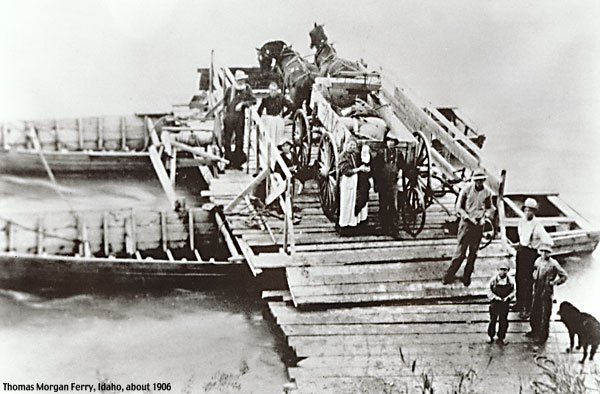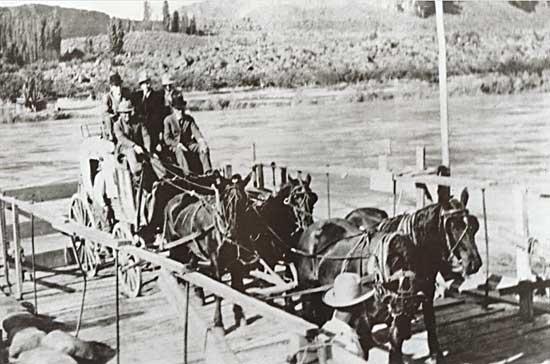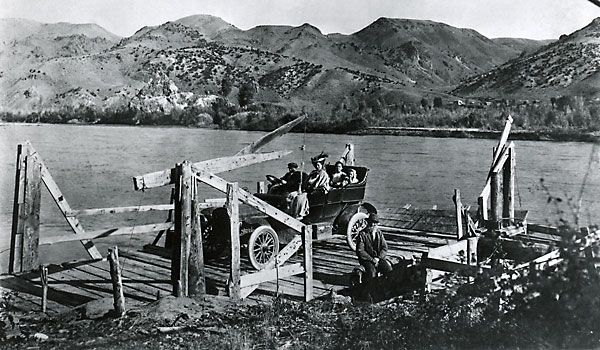 |
||
|
Thomas Morgan owned and operated a ferry across the Snake River near Ririe, Idaho in his later years.
|
|||
|
Thomas Morgan is the man with the white beard leaning against the rail on the left side of the ferry. One account says he lived in a log cabin near the ferry so that he could be summoned when travelers needed to cross the Snake River. Another account says one of his son's helped him run the ferry toward the end of his ownership. The Snake River during most of the year was much too wide and unforgiving simply ford across in a wagon. Ferry boats were employed, especially where the channel was narrower. Thomas Morgan's ferry was located at what is now the Byington Fishing Access. From the book Ririe Our Hometown: "In about 1898, Elof Nelson....built a ferry about three miles upstream from the town
of Ririe. The ferry consisted of two boats with timbers over the top joining both boats. Planks were laid over the timbers
to create a solid floor. A railing was placed around the outside of the whole ferry. The ferry was placed so that the river
current itself provided the momentum to move it across the river. In 1906, Elof Nelson sold this 'Upper Ferry' to Thomas Morgan.....He
ran it himself for several years."
Thomas Morgan's ferry carried teams of horses and wagons and hauled logs and timber from a sawmill in Kelly's Canyon. It appears, from this picture, that there was also a stage coach route that used this ferry, perhaps running to Heise and Rexburg from Idaho Falls?
Many people also ferried for pleasure, as a swimming resort was now at Heise Hot Springs, about three miles downstream (West) on the North side of the river. Thomas Morgan is the bearded gentleman sitting on the side of the ferry. |
|||
|
The account below, which has inaccuracies in it, is quoted for historical interest. It is mostly useful for the interesting stories about Thomas Morgan. "Thomas came to the Snake River Valley in 1891 and when he was nearly 99 years old he purchased the Upper Ferry, the
first ferry across the South Fork of the Snake River near Heise Hot Springs, and successfully operated it personally for five
years. He ran it with a cable by hand. He lived during that time in a one room house on the river bank. Night or day when
a call would come he would hasten from his home to the ferry to get the party actross the river. One time a group of 8 desperadoes
came and forced him at gun point to ferry them across the river. It was after that he decided to sell his ferry business,
saying 'anytime I can't handle a group of desperadoes, it's time for me to sell.' He sold the ferry to George Drake and later
a Mrs. Springer owned and operated the ferry, then Burt Harrington, and later a Frank Smith. Mr. Smith sold the ferry to Ezra
Rapp, who operated it until the Bertha Gavin bridge was made over the Snake River which was dedicated August 12, 1938, and
did away with this upper ferry. The price per vehicle for crossing the ferry was 25 cents one way. A lower ferry was built
several years after this upper ferry and was owned and operated for years by Mr. M. Eugene Holt. This ferry was abandoned
after the bridge was built."
|
|||


